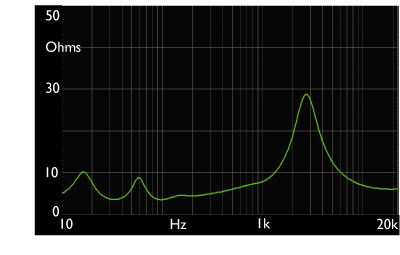So,we have speakers rated at 89db sensitivity with the impedance curve and details other folks in this thread posted.
Mic distance is at 2 meters as he says in the video.
Any calc tells us that at least 300 watts needed for 115db peaks and as for the result it seems (by the peaks SPL) that this little thing can't go over 80-100 watts (by any definition of peak/dynamic/burst power) depending the placement,room,etc.
Still a lot judging by it's size and price though!
View attachment 312608
Thanks, I started reading through all the pages anyway, and found the following:
Djano post34........................he uses the 48V 5A power supply (which is rated conservatively accorded to Amir)
Djano post44........................S.A. did his tests with a Tannoy DC8 Ti. I can't find the impedance curve
Frank2 post50......................but it is for the DC8, Djano questioned if it could be assume to have the same curve as the DC8 Ti

Sokel post136....................................distance was 2 meters, but did he confirm the graph was for two speakers, or just one?
Sokel post136....................................speaker sensitivity 89 dB, but do we know for sure it is 89 dB/2.83V/m, or 89 dB/W/m. It makes a difference depending on how Tannoy measured sensitivity at the time, for example, was it based on a specific frequency range, and how they based the "nominal" impedance on.
So yes, I missed a few things, but still missing:
- Did S.T. confirmed the speakers were DC8, DC8Ti or something else, I am not sure if Djano got the DC8 from S.T., or from the video?
- Are we sure the REW plots were for two speakers making noise or just one? I guess it is, just don't want to assume.
- Operating temperature at the time of measurements, if he had been playing around for a while before doing those sweeps, the amp might have already been overheating.
- Speaker sensitivity basis unclear, though this one is hard to know without taking more measurements.
Based on Amir's reasonably comprehensive measurements, we can ignore all of the above questions, but if we have all the accurate answers then we can assess better as to how severly the amp was pushed during S.P.'s test. We do know that THD was very high, based on the REW file, >50% at the lowest dip at around 70 Hz.

